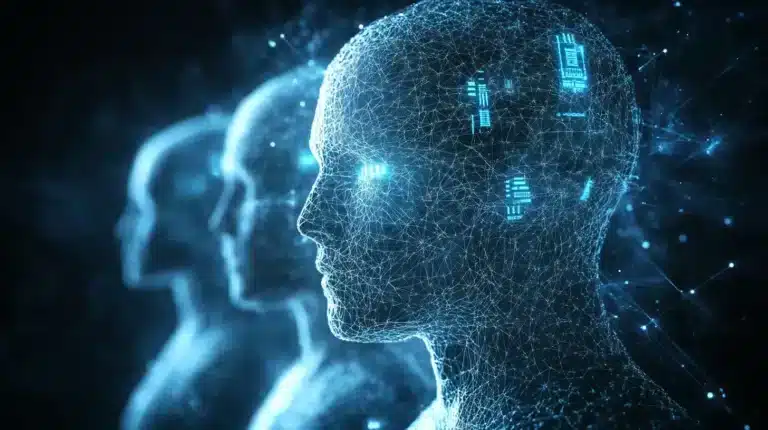Artificial intelligence is advancing rapidly, with large-scale models like ChatGPT and Gemini demanding robust infrastructures to handle billions of parameters. In response to these growing computational demands, an innovative concept is emerging: the Mixture of Experts (MoE). This model distributes tasks among several specialized experts, thereby optimizing computational power and enhancing performance. In this article, we delve into the workings of MoE, its advantages, real-world applications, and the challenges it faces.
What is the Mixture of Experts?
The Mixture of Experts (MoE) operates on a straightforward principle: rather than relying on a single massive model or LLM for all tasks, the model is segmented into several specialized sub-models, known as “experts.” These experts are only activated when pertinent to a specific task, optimizing resources and enhancing the overall accuracy of predictions.
This concept is akin to a company with various specialists: when a problem emerges, only the suitable experts are engaged to address it, rather than involving the entire team, which allows for better capacity management and quicker task execution.
For instance, in a natural language processing model (NLP), certain experts may focus on translation, others on writing, and some on emotion comprehension. The model dynamically selects the most appropriate experts for each query, thereby ensuring a more relevant and efficient response.
How does the Mixture of Experts work?
The role of the router (Gate)
The gate, or router, is a crucial component of the MoE. Its function is to ascertain which experts should be activated for handling a given query. It acts like a conductor, assigning each task to the most proficient experts.
Routing relies on a learning mechanism that adjusts the experts’ weights based on their performances across different queries. Hence, the more an expert excels at a given task, the higher the likelihood of being selected in the future.
Selective activation of experts
Unlike a traditional model utilizing all its parameters for every query, an MoE activates only a small portion of experts, typically between 2 and 4, thereby minimizing the computational load.
Combining results
The chosen experts each generate a partial response, which is then synthesized by a weighting mechanism to produce a final optimized output.

What are the advantages of the Mixture of Experts (MoE)?
1- Reduction in computational costs
By engaging only a few experts at any time, MoE consumes less energy and computational power, optimizing resource utilization.
2- Improved performance
Given that each expert specializes in a subtask, the outcomes are more precise and better optimized compared to a generalist model.
3- Scalability and flexibility
Experts can easily be added or removed, allowing the model to evolve without needing a complete overhaul.
4- Comparison with a monolithic model
A traditional model handles each task uniformly, without specialization. With MoE, each query is directed to the most qualified experts, enhancing the speed and quality of responses.
Concrete applications of the Mixture of Experts:
Application | Description |
Natural Language Processing (NLP) | Major companies like Google and OpenAI employ MoE to enhance their text generation models. Each expert can be dedicated to a specific domain such as summarization, translation, or writing. |
Computer Vision | In image recognition, different experts can analyze shapes, colors, or textures, making models more precise and efficient. |
Voice Assistants and Automatic Speech Recognition | Voice recognition assistants like Siri or Google Assistant leverage MoE to provide faster and more accurate responses by activating only the experts necessary to process the query. |
Medical and Scientific Applications | MoE is used in analyzing complex medical data, such as interpreting MRIs or predicting diseases from genetic information. |
Challenges and limitations of the Mixture of Experts
Complexity of implementation
Routing experts necessitates advanced engineering and sophisticated training.
Expert imbalance
Some experts may be underutilized, leading to inefficient training.
Latency and computation time
The dynamic selection of experts might introduce a slight additional latency.
Need for powerful infrastructures
MoE requires high-performance GPUs or TPUs, making it less accessible to smaller entities.
What does the future hold for MoE?
MoE is emerging as a standard in large language models and advanced artificial intelligence systems. Research is focused on optimizing routing mechanisms and lowering energy consumption.
As generative AI becomes more prevalent, MoE could make these technologies less resource-intensive and more accessible.
Companies are heavily investing in MoE architecture development to enhance AI models’ efficiency and adaptability to various tasks. Furthermore, researchers are examining hybrid strategies that combine MoE with other approaches such as transfer learning and dynamic fine-tuning, paving the way for more efficient and energy-conscious AI solutions.

Conclusion
The Mixture of Experts (MoE) represents a groundbreaking approach that enhances AI model performance while reducing resource consumption. With its specialist system, MoE provides improved accuracy and better computation management, setting the stage for ever-more advanced applications.
Nevertheless, its implementation remains a technical challenge, demanding powerful infrastructures and sophisticated algorithms. Despite these hurdles, MoE is gradually establishing itself as the future of large-scale artificial intelligence models.
With ongoing advancements in technologies and optimization methods, MoE has the potential to redefine how we construct and utilize AI in the coming years.










